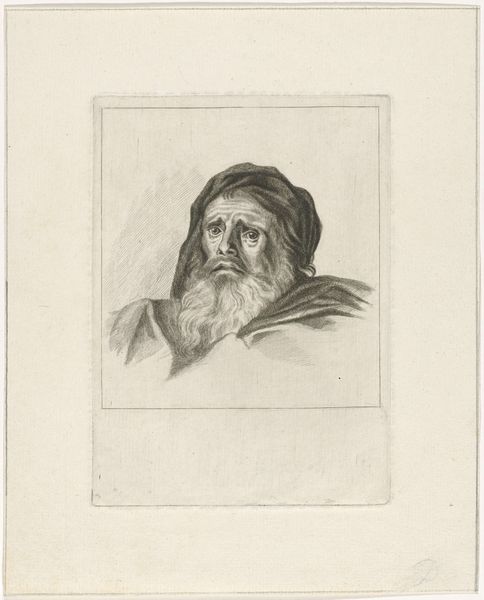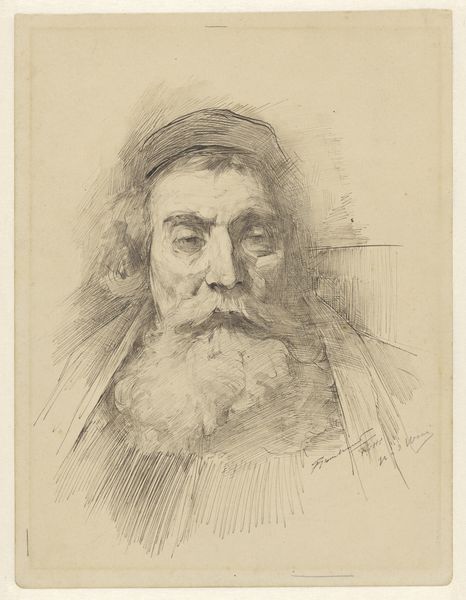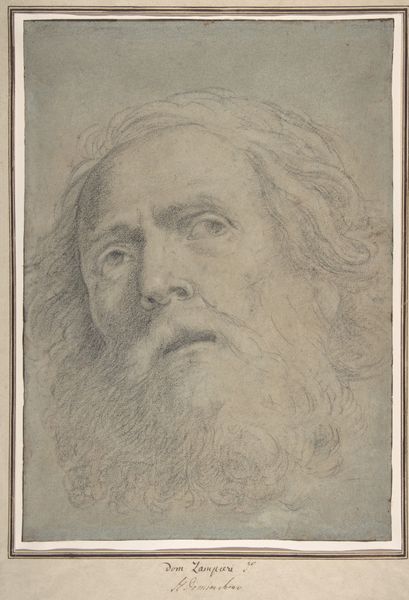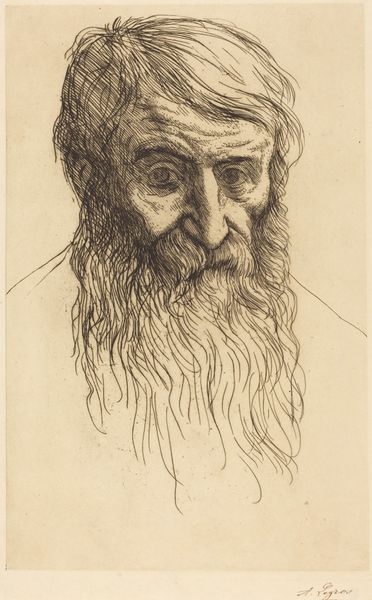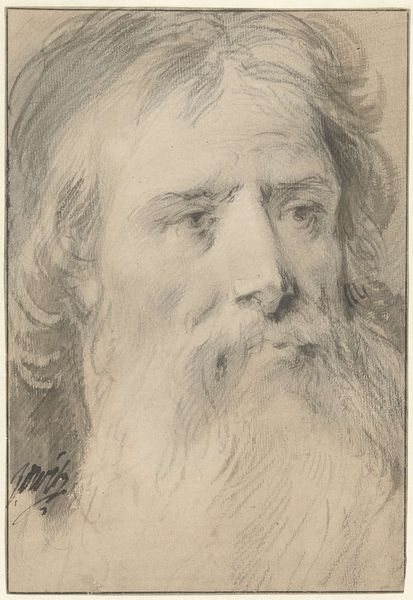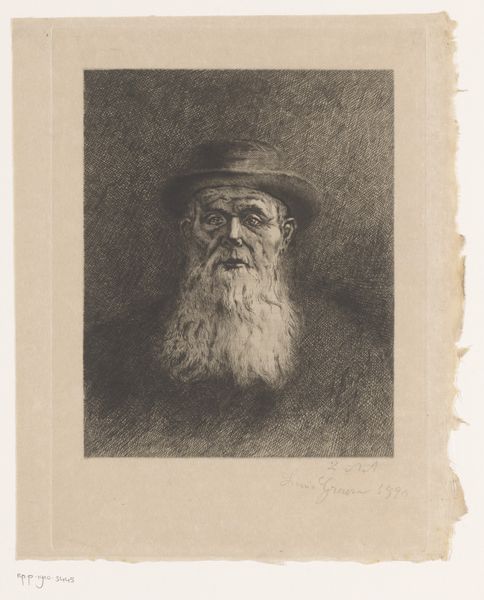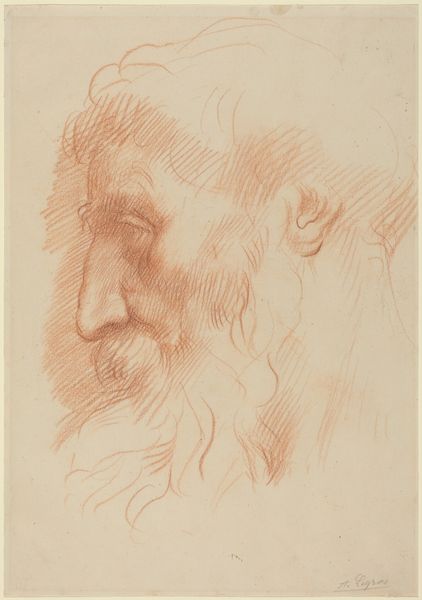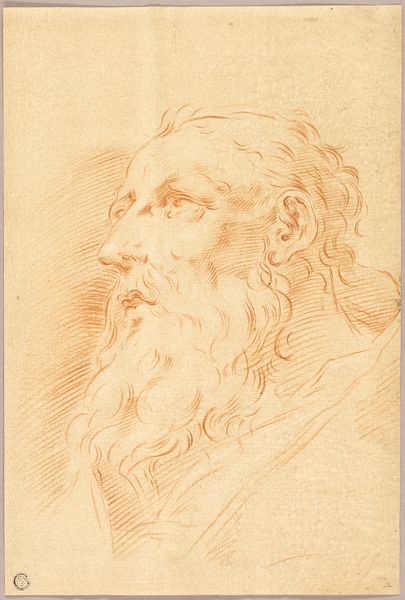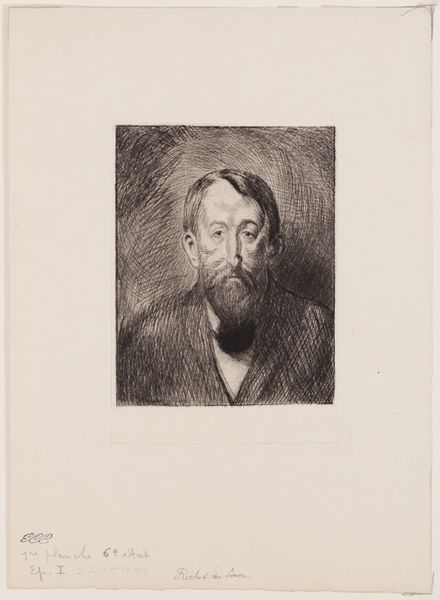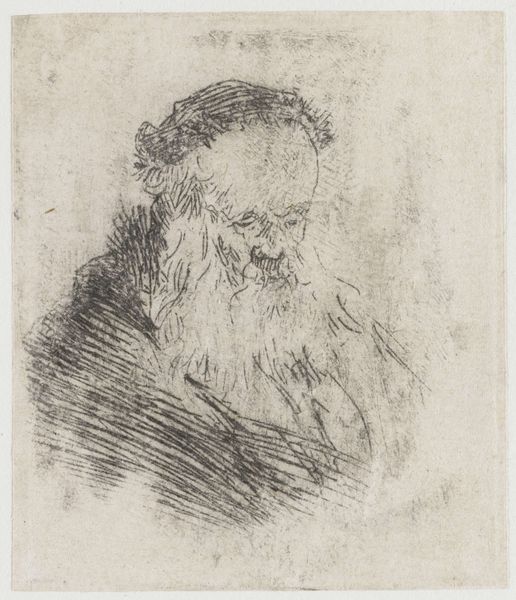
drawing, paper, charcoal
#
portrait
#
drawing
#
charcoal drawing
#
paper
#
pencil drawing
#
symbolism
#
portrait drawing
#
charcoal
#
modernism
Dimensions: height 282 mm, width 237 mm
Copyright: Rijks Museum: Open Domain
Curator: What strikes me immediately about this portrait is its introspective quality. There’s a deep sense of melancholy in his eyes. Editor: I see that too. The work, a charcoal drawing on paper, is entitled "Portret van Emile Verhaeren" and was executed by Armand Rassenfosse in 1916. Knowing it's a drawing adds a layer of intimacy to this quiet observation of the artist. Curator: Indeed. The artist’s choice of charcoal is crucial. Charcoal, especially when smudged and layered, evokes a sense of transience. This isn’t just a representation; it's an artifact, the physical residue of a creative act. I wonder, what type of paper was Rassenfosse using and where would he source it? What was his process like for creating the smudged textures? Editor: Placing this portrait within the context of 1916—a time of profound social and political upheaval—adds a lot. The sitter, Emile Verhaeren, was a famous Belgian poet. The world was in the thick of World War I, a conflict that undoubtedly impacted the collective psyche and, in Verhaeren’s case, deeply influenced his work and perhaps his spirit. The choice to portray Verhaeren in such a vulnerable state speaks volumes. Curator: Absolutely. And consider Rassenfosse's access to quality art materials during wartime; supply chains would have been disrupted. That might affect material choices. Did he adapt? Editor: Perhaps, but that feeling of transience resonates beyond material limitations. It connects with a broader existential anxiety that permeated modernist thought and art. The work speaks to the fragility of life. Verhaeren died later that year, which lends even greater gravity. The act of remembering becomes paramount. Rassenfosse is participating in shaping Verhaeren's legacy. Curator: So the physical traces – the smudged charcoal – carry cultural weight beyond their literal form as they capture loss. It blurs lines of portraiture. Editor: Precisely. What we’re left with is more than just a likeness; it's a powerful commentary on mortality, remembrance, and the human condition, intensified by the backdrop of a world consumed by war. Curator: It gives so much more substance when considered within that wider scope. The value here really lies in this collision between subject, maker and tumultuous moment. Editor: This collision reminds us how artwork documents historical narratives that focus on mortality in difficult moments and invite complex interpretations that challenge and move us.
Comments
No comments
Be the first to comment and join the conversation on the ultimate creative platform.
